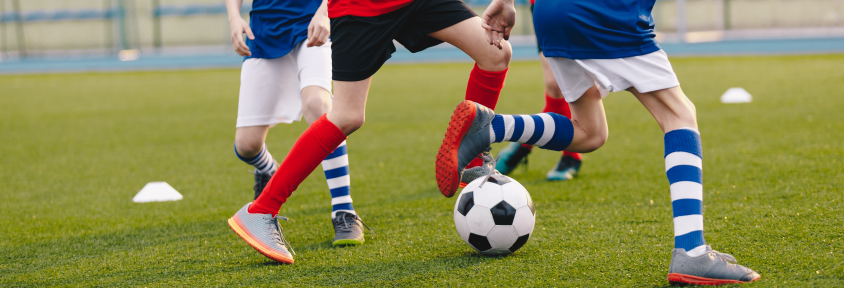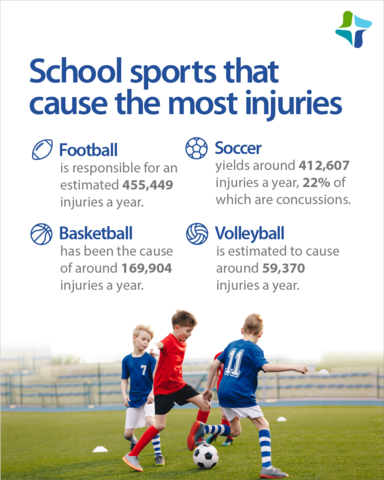Football
Football is the sport that causes the most injuries, with an estimated 455,449 annually. Despite all the padding and support players have, football has been the cause of a plethora of injuries, one of the most common being knee injuries.
Most common football knee injury: ACL rupture
Of all the knee injuries experienced due to football, the most common is a rupture of the ACL (anterior cruciate ligament). The most common symptoms are swelling, loss of range of motion, tenderness in the joint line, and discomfort while walking. The injury can subside on its own based on the severity of the tear, but if symptoms become severe or persist after 24 hours of rest, we recommend going to see a sports medicine physician or come to one of fall Saturday sports injury clinics.
What is the ACL?
The ACL is the place where three bones—the tibia, femur, and patella, also known as the shinbone, thighbone, and kneecap—meet to form your knee. An ACL rupture is when a tear occurs in the muscle and often creates pain and swelling.
Soccer
This internationally beloved sport is well-known for its injuries, but most commonly, the concussions caused by the high-speed balls flying towards players’ heads.
Most common injury: concussions/TBI (traumatic brain injury)
Soccer is estimated to cause around 412,607 injuries (in both male and female players) a year, and a projected 22% of these injuries are concussions. Traumatic brain injuries (TBIs), more commonly known as concussions, are usually caused by trauma to the head (often by a heavy item or a hard fall). This injury is identifiable through persistent headaches, nausea/vomiting, blurry vision, and dizziness. Upon recognizing these symptoms, the patient should be taken to an emergency room as soon as possible.
Basketball
Basketball is one of the most popular sports worldwide and another one of the most dangerous sports, causing around 169,904 injuries a year. Because of the need for rapid hand movement, jammed fingers are one of the most commonly seen injuries in this sport.
Most common basketball injury: jammed fingers/sprains
Jammed fingers occur when the tip of the finger is compressed towards the hand, resulting in a sprain. The symptoms of this injury are very similar to those of other sprains: swelling, bruising, pain with pressure, and limited range of motion. Because the hands are a sensitive part of the body, we recommend that you see a sports medicine specialist as quickly as possible after the injury occurs.
Sprains are very commonly confused with breaks, as the sensation and symptoms are similar. Here are some critical differences between breaks and sprains:
● A sprain results from ligament damage. While inflamed and unstable, a sprained joint can still bear weight.
● A break results from damage to the bone. It can often be identified by a deformity in the affected limb, and be accompanied by immediate swelling, pain, or numbness.
Volleyball
This sport requires its athletes to be quick on their feet and lunge at oncoming balls; volleyball yields around 59,370 injuries nationally a year. One of the most common injuries is sprained ankles, caused by changing direction too fast or landing wrong after a jump.
Most common volleyball injury: ankle sprains
Sprains, particularly ankle sprains, are common in many running sports, and volleyball players are not exempt from this injury. Sprained ankles can be identified by a sharp pain in the affected foot when any pressure is placed on it, swelling, bruising, and tenderness to the touch. These symptoms usually subside between one to three weeks, but if they persist or get worse, we highly encourage you to reach out to a sports medicine physician as soon as possible.
School sports are a great way to encourage your child to get their daily exercise, which encourages an active family lifestyle as well. However, it’s a good idea to take caution and check in on your child’s physical health every now and then. In the event of an injury, we encourage you to bring your child to St. Joseph Health’s Saturday Sports Injury Clinic, where our physicians can check up on their recovery progress. In the case of symptoms that are severe or worsen with time, please take a visit to the emergency room as soon as possible.
Pin for later!



.png/_jcr_content/renditions/cq5dam.web.1120.1400.png)


